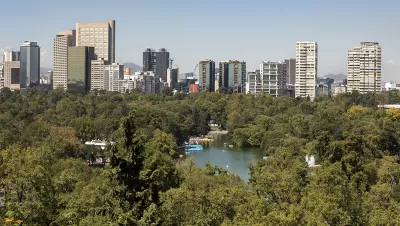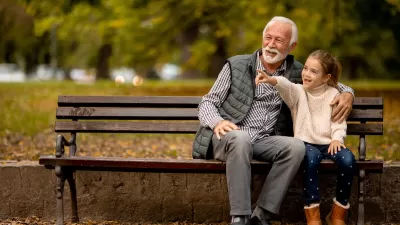When nature is integrated into urbanism, wellness surges. Hazel Borys looks at the benefits.

"The idea of rewilding started out as a movement to conserve, restore, and connect natural areas, and has expanded to how we reintegrate ancient practices into our modern lives. From a flat-footed squat to full emersion in nature to structured programs like ReWild Portland, the idea of letting go of some of our domestication to reconnect with nature is compelling. From a city planning perspective, the rewilding ideas that interest me the most are the inspiration of cities, towns and villages that are making nature more accessible to our everyday habits. And the paybacks for those efforts. When nature is integrated into urbanism, wellness surges."
"'Within five minutes in the trees, our heart rate goes down and within 10 minutes our brain re-sets our attention span,' according to Dr. Nooshin Razani. This is increasingly important because of our connected, always-on habits. Our wired lifestyle offers up constant distractions – much of which didn’t exist a scant decade ago. So we have evolved few coping mechanisms to deal with the subsequent hormones: cortisol from stress and adrenaline from our fight-or-flight response to technologies’ constant jolts."
Borys looks at results of a walk in the park to one by an auto sewer, and other measures of how nature impacts wellness in cities.

FULL STORY: Rewilding Cities: Wellness and nature

Alabama: Trump Terminates Settlements for Black Communities Harmed By Raw Sewage
Trump deemed the landmark civil rights agreement “illegal DEI and environmental justice policy.”

Planetizen Federal Action Tracker
A weekly monitor of how Trump’s orders and actions are impacting planners and planning in America.

Why Should We Subsidize Public Transportation?
Many public transit agencies face financial stress due to rising costs, declining fare revenue, and declining subsidies. Transit advocates must provide a strong business case for increasing public transit funding.

Understanding Road Diets
An explainer from Momentum highlights the advantages of reducing vehicle lanes in favor of more bike, transit, and pedestrian infrastructure.

New California Law Regulates Warehouse Pollution
A new law tightens building and emissions regulations for large distribution warehouses to mitigate air pollution and traffic in surrounding communities.

Phoenix Announces Opening Date for Light Rail Extension
The South Central extension will connect South Phoenix to downtown and other major hubs starting on June 7.
Urban Design for Planners 1: Software Tools
This six-course series explores essential urban design concepts using open source software and equips planners with the tools they need to participate fully in the urban design process.
Planning for Universal Design
Learn the tools for implementing Universal Design in planning regulations.
Caltrans
Smith Gee Studio
Institute for Housing and Urban Development Studies (IHS)
City of Grandview
Harvard GSD Executive Education
Toledo-Lucas County Plan Commissions
Salt Lake City
NYU Wagner Graduate School of Public Service





























